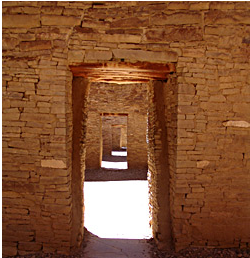Publication Date
7-1-2011
Abstract
Body mass has been studied in multiple subfields within anthropology, including paleoanthropology, bioarchaeology, biomechanics, and forensics. Most previous studies that focused on predicting mass from the skeleton utilized population averages, living subjects, and/or small sample sizes. This study sought to create an individualized predictive model of body mass estimation from multiple skeletal elements. The new multiple element model was then compared to three models currently used by anthropologists. Three hypotheses were tested: 1) the multiple element model has a lower predictive error than the other models, 2) upper limb elements will predict mass more accurately and 3) articular dimensions predict mass more accurately. All three hypotheses were rejected in favor of mixed models. The multiple element model predicted mass (for males and females) and the Grine and colleagues femoral head model (for females only) had low predictive error. Both upper and lower limbs as well as diaphyseal and articular dimensions were selected as significant predictors in the multiple element model. Improved estimation of body mass is used to address our understanding of the behavioral and cultural changes that occurred with the transition to agriculture on the Georgia coast. Social stratification within societies is of great importance in anthropology, as it helps us to see how past peoples interacted, lived, and were organized. In some instances, it becomes difficult to determine when social stratification developed due to a lack of preservation of artifacts indicative of status. In such cases, it is necessary to develop multiple avenues to determine the level of stratification within a society. Two hypotheses were tested: 1) agricultural populations had significantly greater mean mass relative to height (body mass index) than the earlier hunter-gatherers, and 2) agriculturalists display a significantly greater variance, and/or distribution of body mass indices than hunter gatherers. Both hypotheses were rejected as no significant difference in the mean, variance or distribution in BMI values was found between hunter gatherers and agriculturalists. Although a significant difference is not seen between pre-agricultural and agricultural groups, further analyses are warranted before using the distribution of body mass as a proxy for social status are abandoned.
Keywords
body mass, Georgia, Agriculture, hunter gatherers, social status, Social status and body mass
Document Type
Dissertation
Language
English
Degree Name
Anthropology
Level of Degree
Doctoral
Department Name
Anthropology
First Committee Member (Chair)
Osbjourn M. Pearson
Second Committee Member
Heather J.H. Edgar
Third Committee Member
Edward Bedrick
Fourth Committee Member
Lyle Konigsberg
Recommended Citation
Daneshvari, Shamsi R.. "Predicting Body Mass from the Skeleton with an Application to the Georgia Coast." (2011). https://digitalrepository.unm.edu/anth_etds/16

